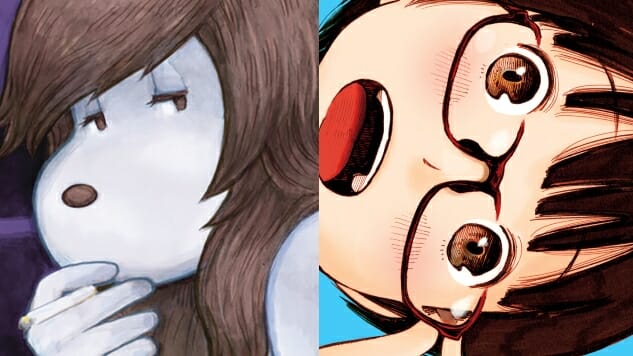The Pervert’s Remy Boydell Interviews Manga Master Inio Asano
Asano is the Creator of A Girl on the Shore, Goodnight Punpun, Nijigahara Holograph & the Recently Imported Dead Dead Demon’s Dededede Destruction
Main Art by Remy Boydell/Inio Asano
[When The Pervert artist Remy Boydell approached Paste about interviewing prolific, acclaimed manga mastermind Inio Asano, we couldn’t say no. Asano is the creator behind such wildly diverse works as A Girl on the Shore, Goodnight Punpun, Nijigahara Holograph and the recently imported Dead Dead Demon’s Dededede Destruction. What follows is Boydell’s transcript of the chat, translated from the Japanese in which it was conducted.]
I’m Remy Boydell, and I came to The Toronto Comic Arts 2018 Festival for the launch of my debut graphic novel, The Pervert. I was lucky to be able to chat with Inio Asano for a while, and I’ve translated our conversation from Japanese to English. Asano-sensei was appearing at TCAF as a featured guest, having travelled from Japan to Canada in support of the release of his series Dead Dead Demon’s Dededede Destruction, published in English by VIZ Media.
There’s a single panel I buried in The Pervert, based on Aiko in Goodnight Punpun.
I can’t fully remember what I was reading a few years ago when I made the book, but I remember reading Goodnight Punpun. I felt like I understood the sense of humor that created the character design for Punpun—the super-harsh realism of the writing coexisting with disruptive visual childishness, until, suddenly, Punpun isn’t childish anymore. It’s a slice-of-life series which gradually builds into something profoundly bleak.

(DEAD DEAD DEMON’S DEDEDEDE DESTRUCTION © 2014 Inio ASANO/SHOGAKUKAN)
Goodnight Punpun felt like the most “complete” work I’d ever read. It wasn’t just the harsh writing that made the work feel “true,” but the extent to which the world is built out with glimpses of secondary media that the characters interact with—comics, porn, boyband magazines, websites—all laid out precisely but organically. Equally, the human groups that exist within Asano-sensei’s work feel natural, from schoolyard in-groups to cults, political protesters and chan-site regulars.
I was taken with an interview that Asano-sensei did with Naoki Urasawa, manga creator and host of Manben, a television show that interviews various contemporary manga artists about their work process. Asano-sensei’s approach to digital versus traditional art is maximalist; the time “saved” by processing reference pictures digitally to underpin backgrounds simply means more time to work back into them with ink, pulling the work together into a unified whole.
I don’t know, dude. I totally fell in love with the work. I spent a month arduously brushing up on my Japanese to prepare. Asano-sensei came with a large entourage of representatives from Shogakukan who sat down the table during our conversation, mostly silent. We were able to have an honest and insightful conversation under their supervision.
![]()

(DEAD DEAD DEMON’S DEDEDEDE DESTRUCTION © 2014 Inio ASANO/SHOGAKUKAN)
Remy Boydell: How many pages do you turn in a week?
-

-

-

-

-

-

-

-

-

-

-

-

-

-

-

-

-

-

-

-

-

-

-

-

-

-

-

-

-

-

-

-

-

-

-

-

-

-

-

-














































